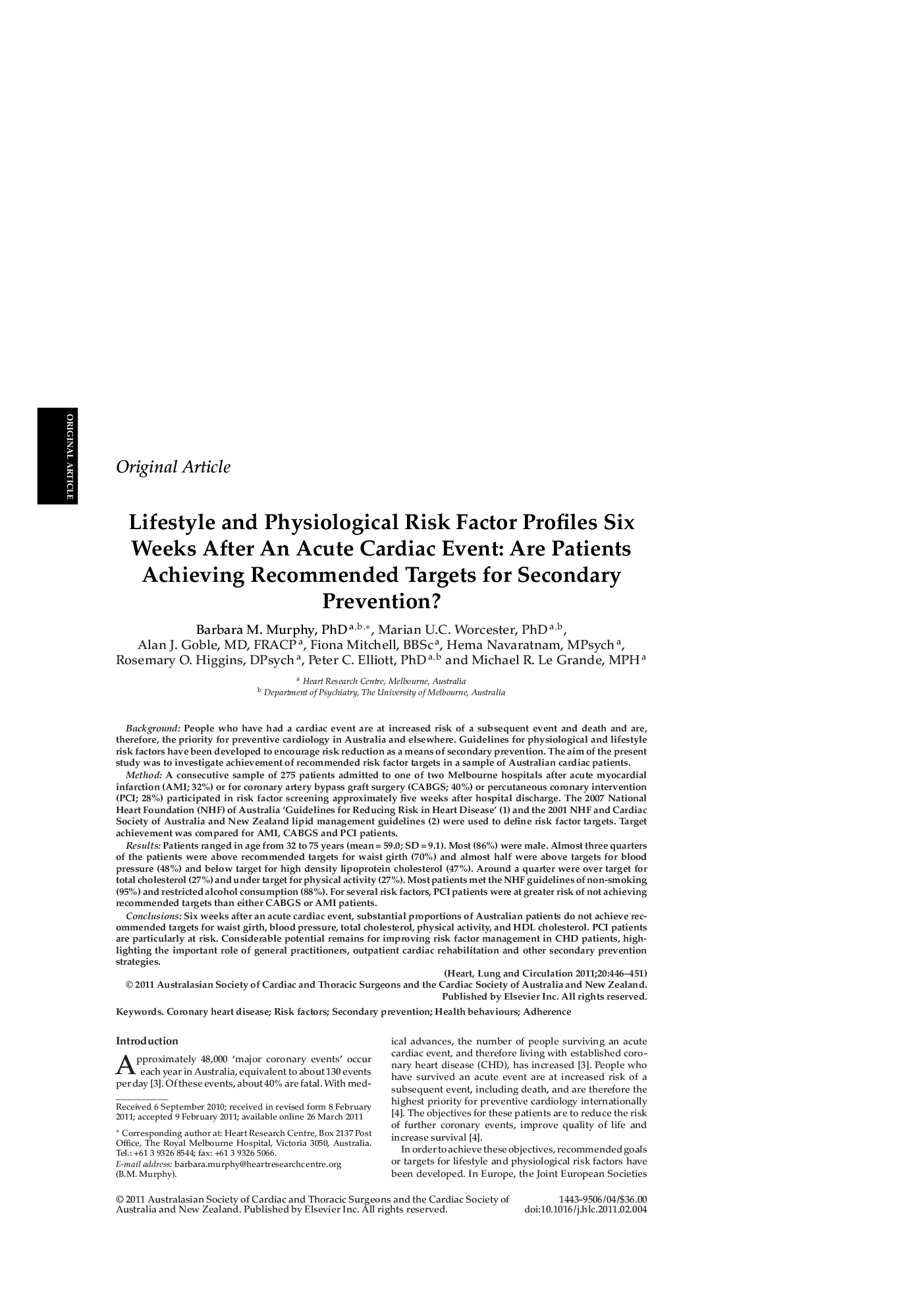| کد مقاله | کد نشریه | سال انتشار | مقاله انگلیسی | نسخه تمام متن |
|---|---|---|---|---|
| 2920709 | 1175741 | 2011 | 6 صفحه PDF | دانلود رایگان |

BackgroundPeople who have had a cardiac event are at increased risk of a subsequent event and death and are, therefore, the priority for preventive cardiology in Australia and elsewhere. Guidelines for physiological and lifestyle risk factors have been developed to encourage risk reduction as a means of secondary prevention. The aim of the present study was to investigate achievement of recommended risk factor targets in a sample of Australian cardiac patients.MethodA consecutive sample of 275 patients admitted to one of two Melbourne hospitals after acute myocardial infarction (AMI; 32%) or for coronary artery bypass graft surgery (CABGS; 40%) or percutaneous coronary intervention (PCI; 28%) participated in risk factor screening approximately five weeks after hospital discharge. The 2007 National Heart Foundation (NHF) of Australia ‘Guidelines for Reducing Risk in Heart Disease’ (1) and the 2001 NHF and Cardiac Society of Australia and New Zealand lipid management guidelines (2) were used to define risk factor targets. Target achievement was compared for AMI, CABGS and PCI patients.ResultsPatients ranged in age from 32 to 75 years (mean = 59.0; SD = 9.1). Most (86%) were male. Almost three quarters of the patients were above recommended targets for waist girth (70%) and almost half were above targets for blood pressure (48%) and below target for high density lipoprotein cholesterol (47%). Around a quarter were over target for total cholesterol (27%) and under target for physical activity (27%). Most patients met the NHF guidelines of non-smoking (95%) and restricted alcohol consumption (88%). For several risk factors, PCI patients were at greater risk of not achieving recommended targets than either CABGS or AMI patients.ConclusionsSix weeks after an acute cardiac event, substantial proportions of Australian patients do not achieve recommended targets for waist girth, blood pressure, total cholesterol, physical activity, and HDL cholesterol. PCI patients are particularly at risk. Considerable potential remains for improving risk factor management in CHD patients, highlighting the important role of general practitioners, outpatient cardiac rehabilitation and other secondary prevention strategies.
Journal: Heart, Lung and Circulation - Volume 20, Issue 7, July 2011, Pages 446–451